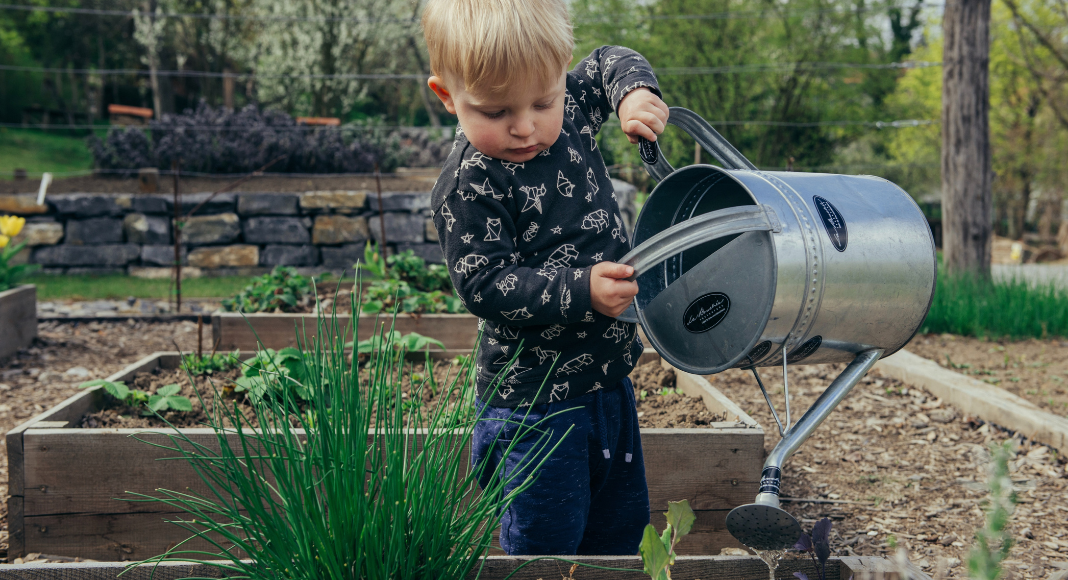I don’t consider myself a master gardener at all, but I grew up in a family who gardened and have acquired some tips and tricks along the way. We either grew our own patch of vegetables or shared a giant (think half a football field) sized garden with our neighbors. If you are new to gardening, I wanted to share a few ideas that might be useful and swap information with those who have a history of gardening.
First, you don’t need to know everything about plants or grow everything from seed.
In fact, if you don’t have a place to seed plants like in a warm garage or greenhouse, I would encourage you to find a local greenhouse. They will not only be able to sell you seedlings but can also give you guidance on what to plant, at what time. Greenhouse workers are often passionate and excited to help your gardening dreams come true.
Most of our garden was put in during one weekend in the summer.
We seeded green beans, but most of our tomatoes, peppers and zucchini plants came from a local greenhouse. We started by tilling the soil. A hoe or garden rake will work fine for small patches, but renting a tiller may be worth it for larger, harder patches of earth.
It’s great to know a community of other gardeners.
Many of our family and friends gardened and, once certain vegetables started to mature, were often overwhelmed with more produce than we could use. There are options like pickling, freezing and canning, but it was nice to swap with others. I recall one year when we were picking 5-gallon buckets full of zucchini for several days in a row. We gave it away left and right. My uncle often had sweet corn to share later in the season. This is an aspect of gardening I love. So often, when there is an abundance, you have no choice but to share or invite others to enjoy it with you.
Preventing pests is another aspect of gardening.
Companies have genetically altered seed to significantly decrease this problem over the years, which cause more resilient vegetables and higher yields. Science is so neat. Though bugs have been a lesser issue since I started gardening as an adult, we do have issues with animals like rabbits and deer eating the plants. We (thankfully) have a fenced-in garden, but that wasn’t always the case. We found that sprinkling cayenne or red pepper flakes over the leaves curbed many of the animals from helping themselves to our plants.
The best time to water plants is in the evening.
It allows the water to sink into the roots instead of being evaporated by the sun. Watering plants in the middle of the day is a risk, as it can shock the plant. When it’s hot and dry, plan to water your garden about every other day. Take into account any significant rainfall. I recommend purchasing a rain gauge to track rainfall. It wasn’t uncommon to get more or less than an inch than my grandparents, even though they only lived a few miles away.
One thing I learned growing up in and around agriculture, is that there is only so much control one has over the success or failure of their harvest. Mother Nature can bring floods, droughts, winds, hail, and extreme temperatures. It’s a great lesson in life, to accept what we cannot control. I love growing and gardening with my children. Besides it being a sensory experience, it also teaches lessons beyond horticulture.













